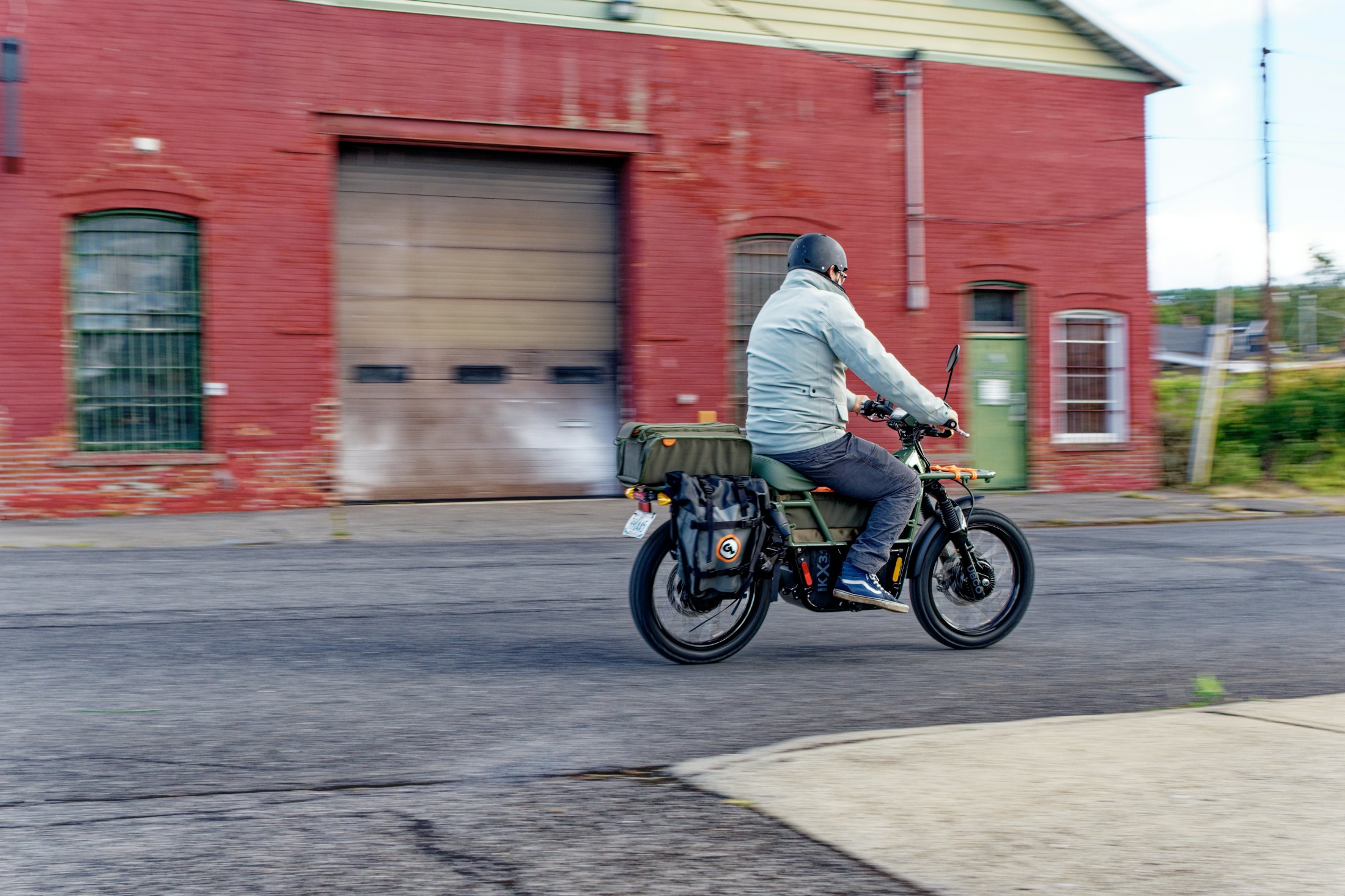
We’re at an odd moment in micro-transit. The e-bike “revolution” has cooled off, in part due to fears of battery fires and towns and cities perplexed by how to regulate the increasing crop of half-bike, half-motorcycles that, a few decades ago in the U.S., would’ve required a moped registration.
Why don’t they regulate? In short: the economy. In lots of cities, delivery companies are carrying your groceries and hauling your meals on two wheels and they depend on this mode of transit and so do scads of consumers. As a result, you’re going to see Amazon and UPS and many other tech giants experiment further, because smaller, more nimble, and zero-emissions vehicles are simply cheaper and easier to maintain on a fleet basis and far easier to park without getting ticketed.
So what about you and your dreams of participating in personal mobility of the electrified variety?
If you’re a tech-savvy, planet-health-concerned person you’d probably like to own an electric car, but those are really expensive. Also, there are the parking and plugging concerns that don’t fit your life — especially if you live in a city without a garage or other storage. And if you live in the boonies, charging infrastructure is weak sauce, to say the least.
So, probably an electric scooter would be pretty nifty, if…

A. It’s not too expensive. The median for decent e-bikes ranges around $3,000 to $4,500. Fancier models can cost $10,000 and up. (The kind that catches on fire will run you $800 and ruin your life.)
B. It can go at least 40 miles without needing a charge.
C. Can keep up with traffic, and has cargo-hauling capacity for groceries and so on.
D. Maybe it can double as a dirt road escape pod, especially if you live where that’s not too far from home.
UBCO, which stands for Utility Bike Company, is a New Zealand outfit that builds its e-scooter-ish devices to fit a lot of those priorities, specifically on cost. Yes, Zero was first in the e-moto space and makes full-on electric motorcycles, and even though it’s recently introduced some cheaper models, they’re still cresting $12,500. Then there’s Sweden’s Cake, winner of lots of Red Dot awards and so on, but with lots of drawbacks. I’ve tested the least expensive Cake, the Makka, and although it ticks the semi-affordable box at $4,170, unfortunately, it has too little power to achieve its claimed top speed of 28 mph. Sure, the $11,470 Osa can hit 56 mph, but at that point just go get the Zero.
Or, more to the point, why not get the UBCO? It ticks most of the above boxes. Starting with cost, you can score a stripped-down UBCO for $3,499, but that version comes with a shorter-range battery of 2.1 KWh. Step up to the $4,499 version with that same battery and it comes with turn signals and mirrors, making it street-legal. That’s more expensive than lots of e-bikes but not crazily priced. Of course, I tested the premium $6,499 2x2 Special Edition, which gets a larger, 3.1 KWh that, in theory, delivers up to 75 miles of range.
Cargo E-Bike Basics
As for use, the UBCO is very easy to get comfortable with. The suspension has preload adjustment so that you can dial in how much it sags under rider weight or payload since total capacity is 330 pounds. Pair the UBCO app to enable a bunch of mode settings, such as how much regenerative braking you want (which feeds back into the battery), hit the red start button, twist the throttle, and go. The Special Edition gets some extras that the other bikes don’t have, such as a Peak Design phone mount that lets you see more metrics that aren’t visible from the gauge cluster, and it has a 30-liter rear storage bag as well as a very handy 12-liter central frame cavity that’s ideal for stowing takeout or your gym bag.
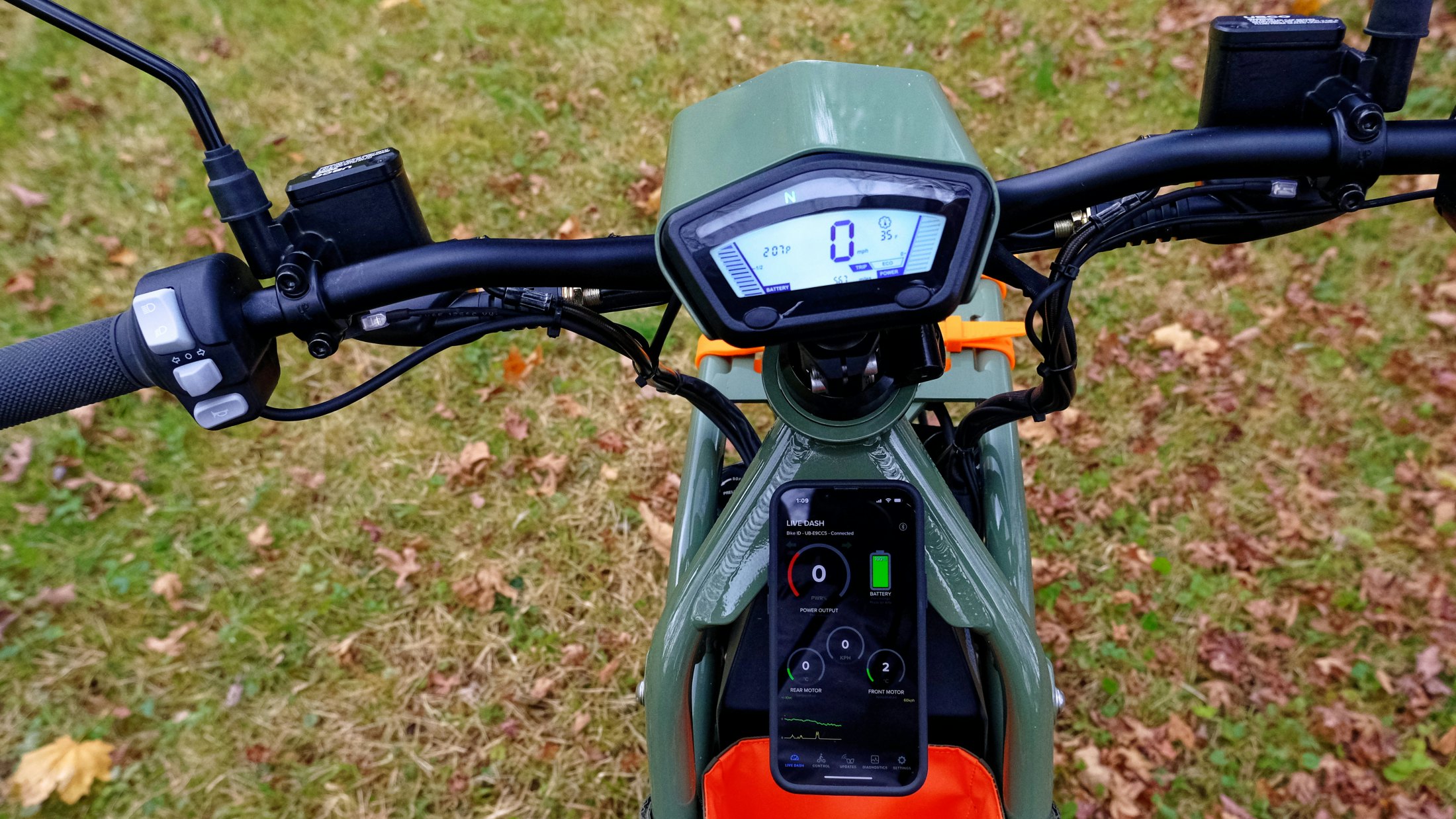
During riding there are some distinctions to adjust to if you’re either used to a conventional gas moto or an e-bike. First, yes, you have mirrors and a turn signal, plus a very bright LED headlamp with a high-beam light. This is all good, and all “normal.” But there’s no transmission, so there’s no clutch lever. Instead, both brakes are operated with your left and right hands.
Riding Time
Dual hub motors also mean this is a two-wheel drive e-moto. Full throttle will spin the front tire, especially on wet gravel, but mostly you don’t notice that you have power at both wheels. Though, when I got onto dirt and a few trails it definitely gave me more confidence while very slowly picking a line on muddy terrain. Here, regenerative braking kinda-sorta works like downshifting, but because you can’t alter it on the fly, just leaving it in maximum regen was the best default, and it’s also pretty handy around town where you’re gaining back a lot of lost battery just by decelerating.
There are also three settings for power: eco, normal, or boost. You might want the most aggressive output to launch ahead of traffic at a light, but the issue is the 31 mph governed top speed. In traffic, that’s a non-issue, but even in my local town, where technically 30 mph is the city limit, you’ll find yourself pressured by drivers wanting to go faster. Also, this isn’t the e-moto for someone who lives in hilly San Fransisco or Seattle. On steep climbs, the 3.2-horsepower output slowed even lightweight riders with no payload to 10–15mph, even with the throttle twisted wide open.
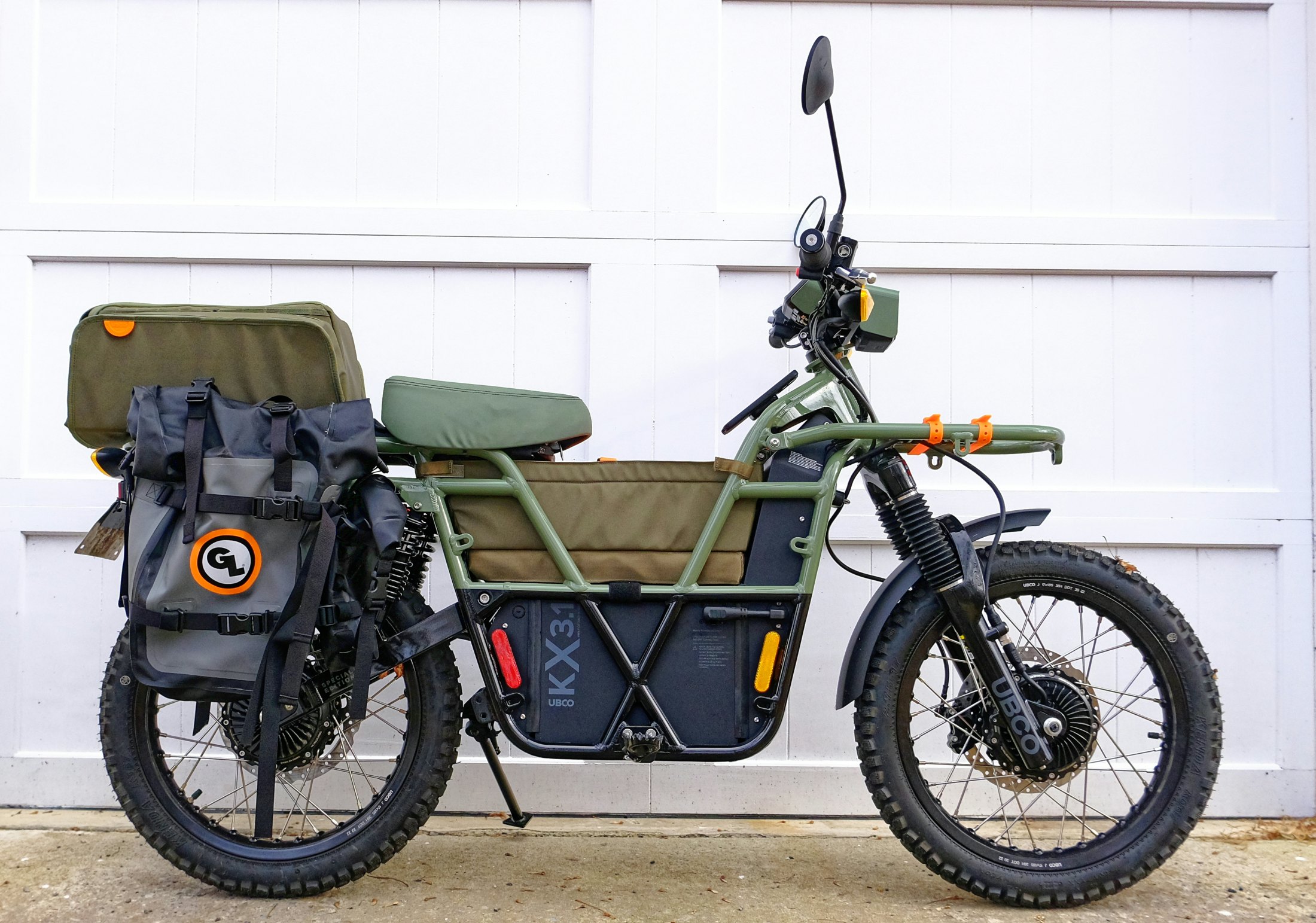

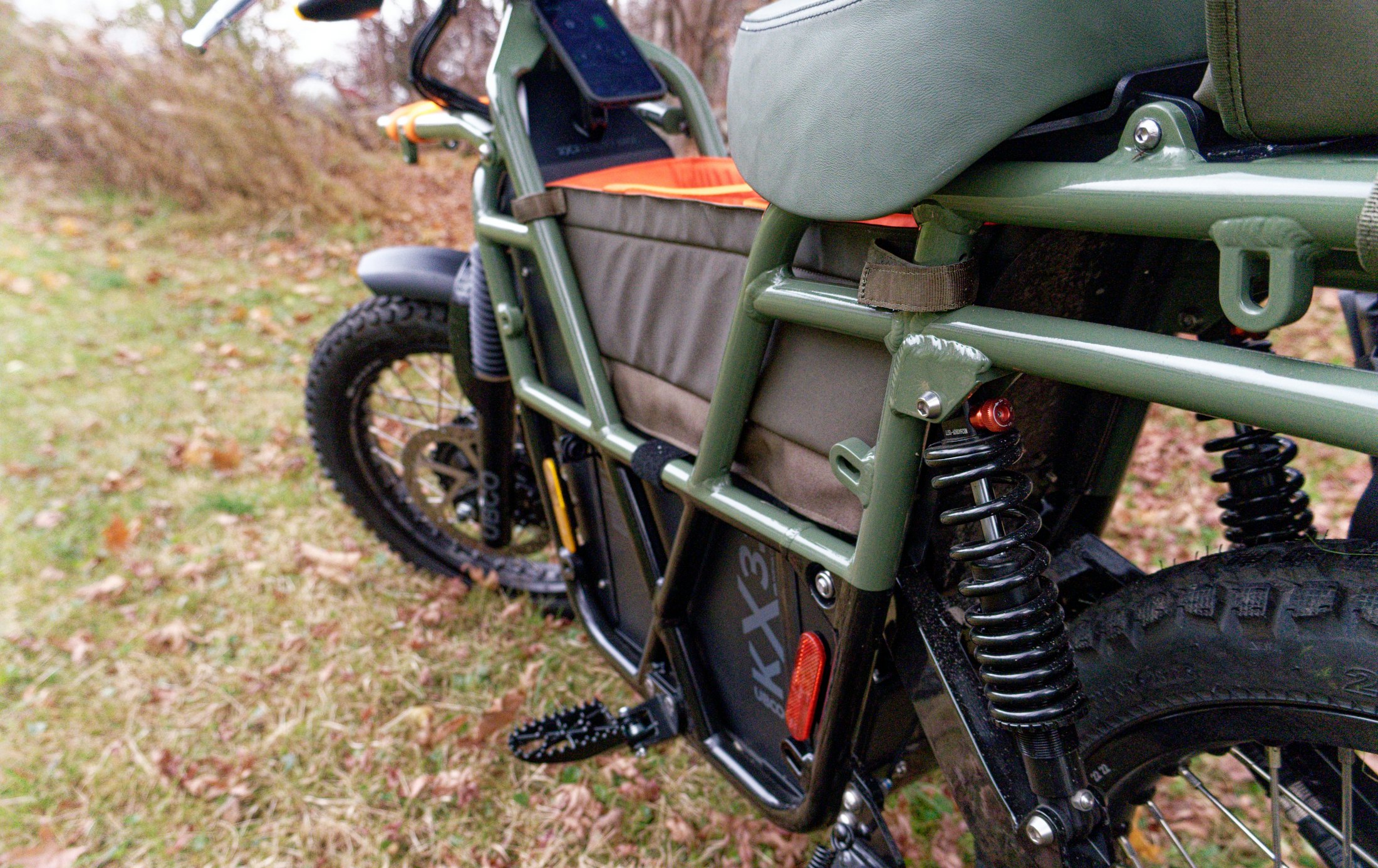
Range with maximum regen and riding mostly in eco mode was about 50 miles, and this was almost always at pretty close to maximum speed to maintain pace with traffic. If you’re riding along rural dirt roads — or seriously crowded city streets — it’s not hard to imagine you’d get the claimed 75 miles.
As for other aspects of ownership and performance, there’s little doubt that 156 pounds is about the weight of two porky e-bicycles, but it’s also very lightweight for an e-moto, which means the UBCO is easy to ride comfortably even if you’ve never once ridden a gas bike. It’s also not too bad to shove around if you’re trying to scootch it over in a living space. During riding, the short wheelbase, very low center of gravity, and chunky knobbed tires only increase the combination of stability at slow speeds and agility at higher ones. Ergonomically the low seat and high-ish footpegs will tire you out even if you’re not a tall human, just because your knees are a bit high, but for most 30-minute commutes this is hardly a hassle, and the low seating position makes this an ideal household rig to share among a family.
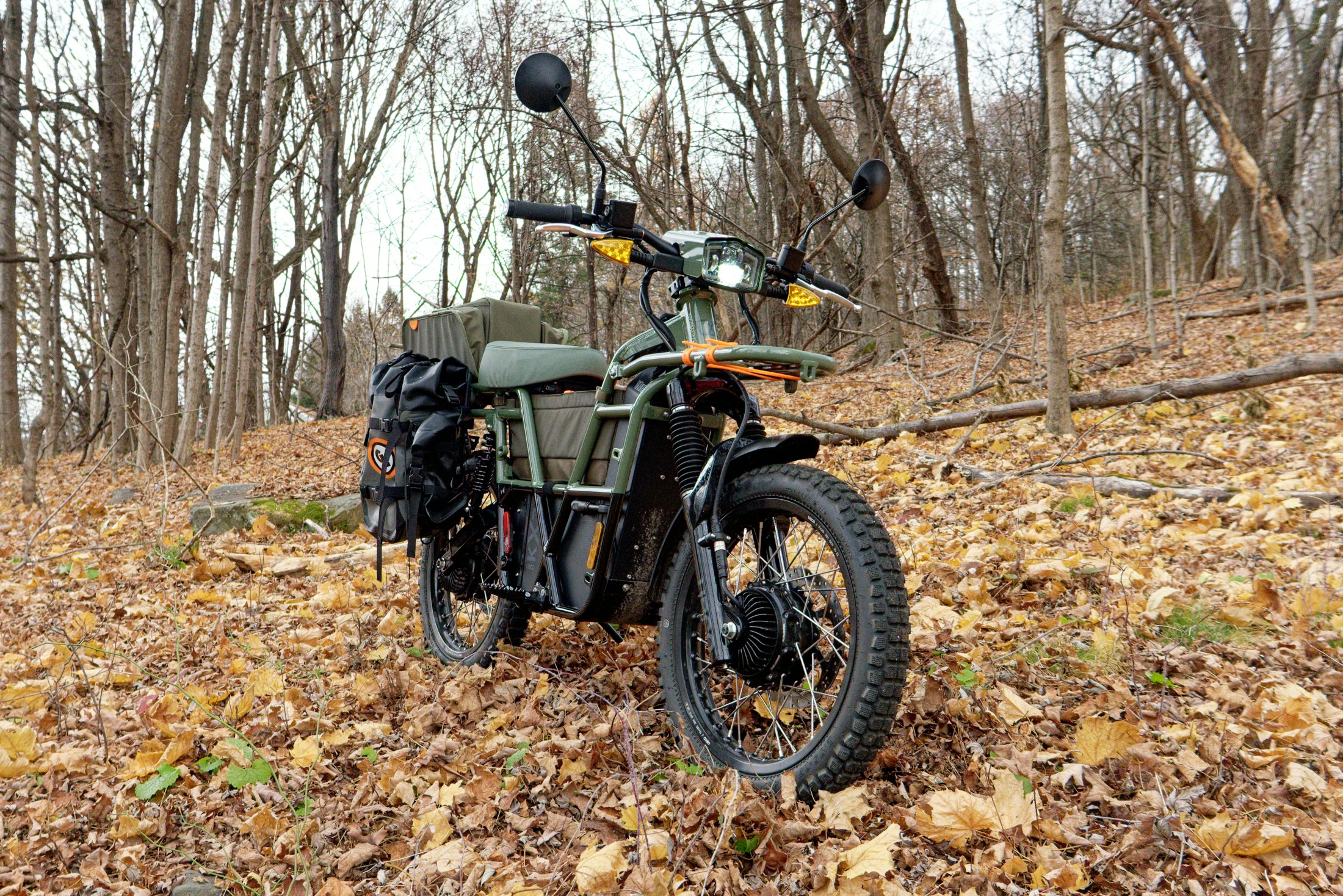
And UBCO is damn smart to make the battery easily removable (it recharged in less than five hours). Yank that out of the chassis and suddenly there’s an e-machine minus its guts, making it far less appealing to thieves. Plus you can crank the front fork to one side and lock it, so now the bike won’t roll straight, which is even less fun for our thieving “friends.” (FYI: You still want to chain lock it, but even without the battery the UBCO exceeds 100 pounds, so it would take a pretty motivated person to swipe it.) Oh, and the app includes GPS tracking, just in case someone does nab your UBCO.
Is It Enough Speed For You?
What’s not to love? Well, as pretty as it is, the UBCO is $5,499 for the white version, minus the special green paint, phone mount, and rear bags. The longer-range battery is basically the only appealing reason over the regular one since aftermarket bags will fit and won’t cost an extra $1,000.
The bigger issue will be whether the lowish top speed is a deal breaker for where you live. Look: You can get away with riding the UBCO in the bike lane in lots of places, so that’s one gray-area hack for not being able to ride faster, but if the bike could hit 40 mph you wouldn’t feel unstable with the short wheelbase (I saw that just going down hills) and you’d be in a better position to keep up with traffic.
I’ll bet UBCO has heard this feedback before, but probably part of this is about keeping prices lower. Still, I’d wager there’s a bigger market for something just a little faster. My ask: UBCO, please go just a little more e-moto and less e-bicycle. Thanks!







